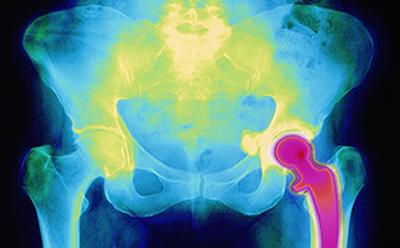A broken bone may lead to widespread body pain – not just at the site of the fracture

Breaking a major bone may increase risk of widespread chronic body pain in later life, a new study has found.
Researchers at the Medical Research Council Lifecourse Epidemiology Unit (MRC LEU), University of Southampton, found that men and women who had a spine fracture and women who had a hip fracture were more than twice as likely to experience long term widespread pain as those who had not had a fracture.
Lead researcher Nicholas Harvey, Professor of Rheumatology and Clinical Epidemiology, said: “The causes of chronic widespread pain are poorly characterised, and this study is the first to demonstrate an association with past fracture. If confirmed in further studies, these findings might help us to reduce the burden of chronic pain following such fractures.”
The study, published in Archives of Osteoporosis, used the UK Biobank cohort of 500,000 adults aged between 40 and 69 years old, to investigate associations between a past history of fracture affecting upper and lower limb, spine or hip and the presence of chronic widespread body pain. The researchers considered possible effects of a wide range of further factors, including participant diet, lifestyle and body build, and, importantly, measures of psychological health.
They found that the risk of chronic widespread body pain was increased if participants reported having a past fracture, especially spine and hip fractures.
Professor Harvey added: “Chronic widespread pain is common, and leads to substantial health related problems and disability. Past studies have demonstrated an increased risk of chronic widespread pain following traumatic events, but none have directly linked to skeletal fractures.”
Professor Cyrus Cooper, Director of the MRC Lifecourse Epidemiology Unit, University of Southampton, added: “This study illustrates the importance for the University of Southampton and MRC Lifecourse Epidemiology Unit in leading large, multi-centre analyses on this internationally leading UK Biobank dataset. The findings will be built upon in further analyses that capitalise on the genetic and intensive musculoskeletal phenotyping components of the study in which we continue to play an important role."
Notes for editors
UK Biobank is a major national health resource, and a registered charity in its own right, with the aim of improving the prevention, diagnosis and treatment of a wide range of serious and life-threatening illnesses – including cancer, heart diseases, stroke, diabetes, arthritis, osteoporosis, eye disorders, depression and forms of dementia. UK Biobank recruited 500,000 people aged between 40-69 years in 2006-2010 from across the country to take part in this project. They have undergone measures, provided blood, urine and saliva samples for future analysis, detailed information about themselves and agreed to have their health followed. Over many years this will build into a powerful resource to help scientists discover why some people develop particular diseases and others do not. http://www.ukbiobank.ac.uk